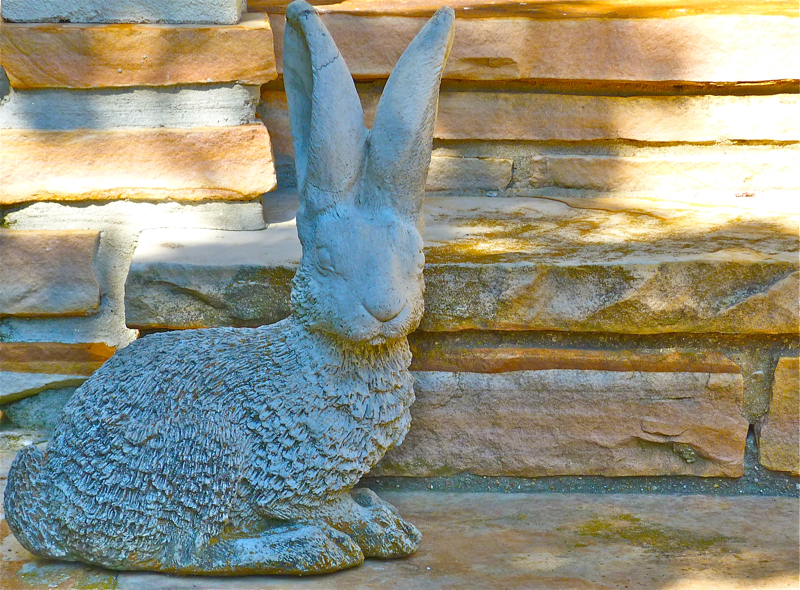How Not to Kill a Dwarf Alberta Spruce
 Friday, July 8, 2011 at 1:55PM
Friday, July 8, 2011 at 1:55PM I feel like an impostor. Me? Offering commentary on Picea glauca 'Conica', AKA dwarf Alberta spruce tree? Isn't that a bit like a Canadian giving expert advice on the Southern Magnolia?
Nevertheless, I am a gardener in subtropical Alabama, heartiness zone 7b, and I grow three Alberta spruces, two of them for about a dozen years, and I haven't killed them yet. Actually, dwarf Alberta spruces can survive in zone 8, a little farther south of me, but it's iffy.
These lovely dwarfs grow best in zones 3-6. Shaped like perfect little Christmas trees, they are good accent plants that need minimal pruning and are low maintenance if given the right conditions. They grow only two to four inches a year. I grow mine in pots. The two older ones are twenty seven inches tall with a trunk diameter of two inches. Even in the ground and in more suitable climates they can take thirty years or more to grow to twelve feet.
I did almost kill the two oldest. Once upon a Christmas season I purchased them as decoration for my fireplace mantel. They were so pretty there that I kept them in the house too long, and the middle section of each turned brown. I ended up making topiaries of them.  You can read about it in my previous post, A Topiary Tale. The third is several years younger and also is in a pot, but I have maintained its traditional shape.
You can read about it in my previous post, A Topiary Tale. The third is several years younger and also is in a pot, but I have maintained its traditional shape.
So, for what it's worth, here is what I have learned about dwarf Alberta spruces and how not to kill them:
1. Plant them in well drained soil. Did I mention that long ago I planted two of them in my native soil, which is red clay? This stuff becomes like sticky plastic when wet and drains poorly. When it dries out, it becomes like concrete. Those two plants were doomed and died the first season. This is why I grow my current ones in pots, in good soil, with a layer of gravel in the bottom.
2. Give them acid soil. I bought potting soil and added peat moss and shredded pine bark mulch to it, which also helps with #1. I also mulch around them with shredded bark.
3. Keep them well watered. This is particularly true in warmer climates and extremely true if grown in pots. I water my pots daily during the hot summer, except when it rains. This is why all three are located on the patio, only a few feet from a water source. Under my conditions they will die if they dry out. Period. But remember #1, they don't like soggy soil!
4. Plant them in full sun to high shade.
5. Give them an eastern or northern exposure. Avoid planting where harsh winter winds or hot afternoon sun can burn them. Mine are on the north side of the house.
6. Don't crowd them against other plants or against buildings. They need good air circulation. Their needles will turn brown on the crowded side, and once brown, they will stay that way. If this happens, trim the brown areas, move to a better location and hope for new growth. Crowded conditions also promote spider mites. See #8, below.
7. Use natural fertilizer recommended for evergreens. Apply in spring and again in late summer. Many chemical fertilizers contain the nitrate form of nitrogen, which can harm the plant's roots. I use fish emulsion. I also apply a tablespoon of magnesium sulfate (epsom salts) around the base and water in well.
8. Browning of needles can be due to spider mites. If you shake a branch over a white piece of paper you may see the tiny moving bugs. DO NOT use horticultural oils or chemical insecticides. Dwarf Alberta spruces are sensitive to oils and many pesticides. You may treat a small infestation by spraying with water, and this is good to do a couple times a week as a prevention. You can also use an insecticidal soap solutiion, once a week for several weeks.
9. It probably doesn't hurt to sing or talk to them on a regular basis, but avoid petting or handling the foliage, as your plant may respond with brown tips.
10. Minimal pruning should be done with clean, sharp pruners. Once a year is probably enough. I prune mine in spring after new growth has started.
That's it. If I can keep a dwarf Alberta spruce alive, you can too if you provide the right environment and care. Good luck!
 Permalink
Permalink  dwarf Alberta spruce in
dwarf Alberta spruce in  evergreens,
evergreens,  patio garden
patio garden 
